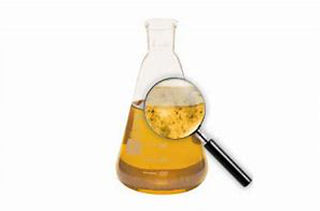 Oil Analysis is the key to resolving current problems and preventing future shutdowns.
Oil Analysis is the key to resolving current problems and preventing future shutdowns.
Just as Doctor would examine a patients blood to determine their current health and the potential for future problems, the oil can be tested.
JFI Management will test Five Data points to determine the health of the system and provide a written report that includes Test Results, Analysis and Recommendations.
What we test:
- Total Acid Number (TAN) is a measure of base oil degrading. An increase in TAN is an indication that the additive package is depleted and oxidation of the oil had begun.
- Viscosity is a measure of the oils resistance to flow. Oil with a low viscosity will not provide a sufficient lubrication film between moving and sliding parts, resulting in component wear and premature system failure.
- Water is the most common chemical contaminant in the hydraulic oil; even small amounts of water can reduce the service life of the oil and system components by 3X to 5X.
- Viscosity Index is a measure of the stability of the oil viscosity over a range of temperatures. New petroleum based oils have a VI between 90 and 120; if the VI falls below 90 the valve becomes difficult to set and leveling is inconsistent.
- ISO Cleanliness Code measures particles greater than 4/6/14 microns per ml of oil. Dirty oil will damage the valve and wear out metal components. Hydraulic elevators have an open reservoir, so, there is always debris entering the system, in addition to the oxidation byproducts of normal wear.
 Oil Testing should be performed, before , during and after oil filtration to determine the effectiveness of the cleaning. In all cases, an annual oil analysis should be considered a part of good maintenance practices.
Oil Testing should be performed, before , during and after oil filtration to determine the effectiveness of the cleaning. In all cases, an annual oil analysis should be considered a part of good maintenance practices.
The frequency of analysis will depend on the critical nature of the elevator. If there is only one elevator in a building, that machine should be considered critical. High use and dirty environments should trigger a more regular schedule of analysis as well.